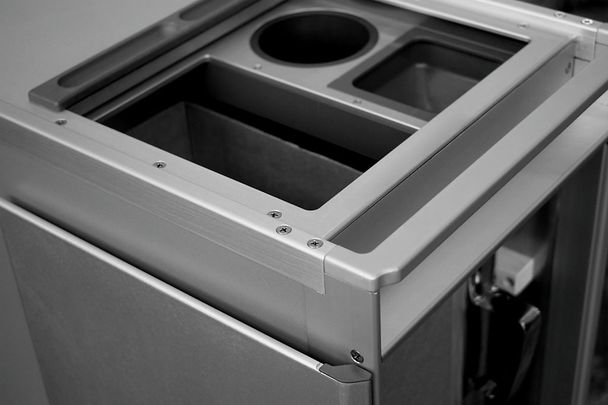An innovative solution to in-flight waste comes from the “Fly Your Ideas” student challenge

With support from Airbus, young ideas take off to manage the rising quantities of cabin waste and their cost
Passengers are increasingly becoming aware of cabin waste on airliners as the amount generated during flights becomes a serious concern – one that takes creative solutions to fix.
With costs increasing, new recycling regulations being implemented, and a greater emphasis placed on the aviation industry’s environmental impact, Airbus has initiated discussions with airlines to find innovative solutions for waste management.
One answer has emerged from young minds via Fly Your Ideas – the biennial competition organised by Airbus in partnership with UNESCO that enables students around the globe to apply their classroom learning and research in solving real-world challenges.
Retrolley: student-inspired innovation for in-flight waste treatment
Originally created by Brazilian aviation students from Sao Paolo University (and a competition finalist in the 2015 Airbus Fly Your Ideas competition), the Retrolley is a totally re-designed trolley that collects trash and separates it at the same time.
Nicolas Jourdan, an Airbus cabin innovation manager saw the students’ concept from the Fly Your Ideas challenge and thought: “Wow, this is so clear we should do something with this. We can make it fly, especially as it combines innovation and environmental goals together.”
Airbus worked on maturing the students’ idea and transitioning the design into reality together with Iacobucci HF Aerospace, an Italian manufacturer that makes such cabin products as coffee machines, trash compactors and trolleys. The initial student concept has been refined and first test flights were performed in late 2018.
The Retrolley has several different compartments that can be customised according to airlines’ specific needs. They were created with flexibility in mind, and possible configurations have many variations, such as one container for stacked-up cups, another for liquids, one more to hold recyclable paper and plastics, and a fourth slot for trash that cannot be easily recycled.
Lucio Iacobucci, the CEO of Iacobucci HF Aerospace, explained: “As a very simple system, the Retrolley can be used on different flights. Each airline has its own approach and needs, and this trolley is adaptable to various requirements.”
With its straightforward, non-electrical and lightweight design – as well as an ability to be integrated into any galley without modification – the Retrolley fulfils airlines’ key requirements and contributes to a more environmentally-friendly approach to in-flight waste, Iacobucci added.

Dealing with increasing amounts of in-flight waste
The amount of inflight waste generated on airline flights is vast – and continues to grow. Contributing factors include the rising consumption of passengers, more elaborately wrapped food and goods, as well as travellers bringing airport-bought food along with them.
According to the International Air Transport Association (IATA), 5.2 million tonnes of cabin waste were created in 2016 – and this number is expected to double by 2030.
With the continuous growth in air traffic, the amount of in-flight waste will increase as well. Currently, it is collected, but rarely sorted, by cabin crews and nearly all of it is handed over to airports – which, in turn, send it to landfills or incinerators.
Some airports are raising their charges for handling waste that is not pre-sorted, and some carriers find it more economically advantageous to hold on to their trash for the return flight, then unload it back at their hub where fees may be lower. Overall, the International Air Transport Association (IATA) estimates the cost of handling cabin waste to be approximately $500 million per year – and this figure is expected to double by 2030.
IATA Assistant Director Jon Godson values the Retrolley as a way forward in the campaign against waste because it addresses health inspectors’ concerns about the need to clearly separate recyclable rubbish from other waste. “The Retrolley is a great step forward and should provide assurance to regulators that we can keep recyclables free from any bio-security risks,” he explained.
Airbus also is convinced the Retrolley will be welcomed by airlines and contribute to a more sustainable future for air transport industry.
Iacobucci HF Aerospace will demonstrate the Retrolley at the Aircraft Interiors Expo, taking place in Hamburg on April 2-4.